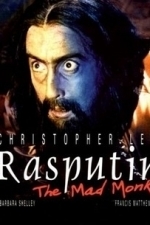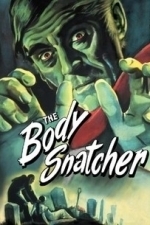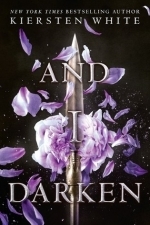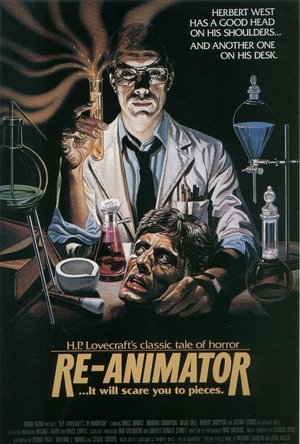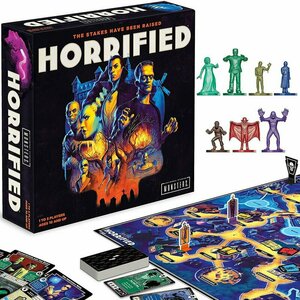
Pimp Your Name 2 - More Backgrounds with YOUR Name
Lifestyle and Entertainment
App
Create wallpapers with your name! * NEW VERSION * * Many more design fonts and lettering styles! *...

HOOKED - Chat Stories
Book and Social Networking
App
Every HOOKED story is told as a bite-sized text message conversation, as if you were reading someone...
Matthew Krueger (10051 KP) rated Rasputin, the Mad Monk (1966) in Movies
Nov 10, 2020
The story is largely fictionalized, although some of the events leading up to Rasputin's assassination are very loosely based on Prince Yusupov's account of the story. For legal reasons (Yusupov was still alive when the film was released), the character of Yusupov was replaced by Ivan (Matthews).
Christopher Lee play as Grigori Rasputin, the Russian peasant-mystic who gained great influence with the Tsars prior to the Russian Revolution.
The emphasis is on Rasputin's terrifying powers both to work magic and to seduce women.
Rasputin the Mad Monk was filmed back-to-back in 1965 with Dracula: Prince of Darkness, using the same sets at Hammer's Bray Studios. Lee, Matthews, Shelley and Farmer appeared in both films. In some markets, it was released on a double feature with The Reptile.
It was the third collaboration between Christopher Lee and Don Sharp, following The Devil Ship Pirates and The Face of Fu Manchu.
Lee later said, "The only way you can present him is the way he was historically described. He was a lecher and a drunk, and definitely had healing powers. So he was a saint and a sinner... There were very few good sides to him. Rasputin is one of the best things I’ve done. "
"I think it's the best thing Chris Lee's ever done," said Sharp in 1992. "Rasputin was supposed to have had this ability to hypnotise people.
The original ending had the lifeless Rasputin lying on the ice with his hands held up to his forehead in benediction. However, it was considered controversial for religious reasons, and was removed. Stills of the original ending still exist.
Sharp says the final fight scene between Francis Matthews and Christopher Lee was greatly cut by Tony Keys when Sharp had to leave the film during editing. Sharp had greatly enjoyed the experience of making his first two Hammer films - Kiss of the Vampire and Devil Ship Pirates - but not Rasputin.
As a child in the 1920s, Lee had actually met Rasputin's killer, Felix Yusupov. In later life Lee met Rasputin's daughter Maria.
Its a good horror film.
Matthew Krueger (10051 KP) rated The Body Snatcher (1945) in Movies
Oct 17, 2020
The plot: Dr. Toddy MacFarlane (Henry Daniell) needs cadavers for his medical experiments, ultimately intended to treat a young disabled girl. However, they are not easy to come by, so he enlists the help of taxi driver John Gray (Boris Karloff) and his assistant, Joseph (Bela Lugosi), to unearth bodies from the cemetery. When Donald (Russell Wade), Dr. MacFarlane's assistant, recognizes one of the corpses Gray delivers, the true source of the bodies is called into question.
It is based on the short story "The Body Snatcher" by Robert Louis Stevenson. The film's producer Val Lewton helped adapt the story for the screen, writing under the pen name of "Carlos Keith". The film was marketed with the tagline "The screen's last word in shock sensation!" The frequent mentions of Burke, Hare, and Dr. Knox, all refer to the West Port murders in 1828.
The Body Snatcher was one of three films that Boris Karloff did with RKO Radio Pictures from 1945 to 1946, which were produced by Val Lewton. The other two films were Isle of the Dead (1945) and Bedlam (1946).
Bela Lugosi, who became famous with another Universal classic, Dracula (1931), also signed a deal with RKO. Lewton and MacDonald eventually wrote a small role for him; it became the last film Lugosi and Karloff made together.
Robert Wise – later best-known for his work in The Day the Earth Stood Still (1951), West Side Story (1961), The Sound of Music (1965), and The Sand Pebbles (1966) – was assigned to direct the film. Longtime film editor at RKO, he had replaced the original director on The Curse of the Cat People (1944) when it fell behind schedule and Lewton, who produced it, decided to promote him to his superiors.
Its a excellent film.
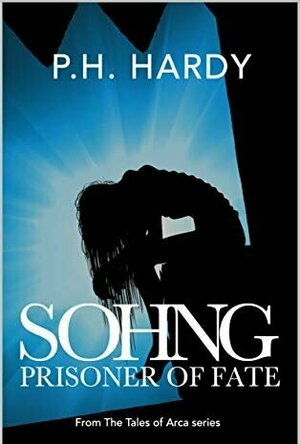
Sohng: Prisoner of Fate (Tales of Arca #1)
Book
n a world of hidden secrets, all will be revealed in this Dark, Science Fiction, Fantasy Adventure....
Southern Today (21 KP) rated And I Darken (The Conqueror's Saga #1) in Books
Nov 7, 2017
Again, I did not like the voice of the reader for this novel. She was grating, could not do much variation of the voices and I wish she would not have tried, and was the reason I often considered stopping the track. And I have no idea how to spell any of the names without looking them up.
This novel, by Kiersten White, follows Lada and Radu, in the 1400s, in the Ottoman empire as insurances for the Sultan.
I wonder if, like many young adult series, this would have been better as a single book with the next being far in the future or following other characters during the same time frame.
If you enjoy war novels, historically-set novels, or stories of growing up in difficult circumstances will enjoy this.
Alright, SPOILERS BELOW, SPOILERS BELOW, PLEASE SCROLL FOR DISCUSSION there, that is out of the way.
So, this book covers a good lifetime, showing us the development, fully, of characters. Saw the gay man coming as soon as he was born, which is kind of sad. Why, why make the gay man beautiful? Why make it so obvious from the start?
Why have her fall in love with the future Sultan?
I wanted her, based on the description of the book, to be in her homeland more often than they are. The hatred between the siblings isn't what is odd, but what causes it. How Radu doesn't understand Lada's love towards him and what drives her. I do not understand it.
This book is also supposed to be a gender-bend of Dracula the Impaler. Which is interesting, because I did not figure that out from reading it. It is the correct time period, but gender bending DOESN'T WORK historically. I am sorry, it would be far to complicated to do that. It, it just doesn't work. You can write it and ponder what it would have been if one character was different. But not all. So, is that what this is?
I think I will be reading (or listening?) to the second book of this.
THIS VOICE IS TERRIBLE!
Alright, there. Little bits done
Hazel (1853 KP) rated The Cure for Dreaming in Books
Dec 7, 2018
On her seventeenth birthday 1900, Olivia Meade gets invited onto a stage to be hypnotized by the young Monsieur Henri Reverie in this historical, paranormal novel. In Oregon at this period of time women were not allowed to vote in presidential elections and Olivia’s father is determined that she does not get influenced by the campaigning suffragists. On hearing about the hypnotist, Dr. Meade hires him with the job of removing the “selfish” and “unladylike dreams” from his daughter’s head. However this causes Olivia more problems than expected. She begins to see horrible images but are these as a result of Henri telling her “you will see the world the way it truly is”, or is she hallucinating as a result of reading Dracula more times than necessary?
<i>The Cure For Dreaming</i> contains a mix of historical references and paranormal ideas as both Henri and Olivia struggle to find a successful way of reversing the effects of the hypnosis as well as involving themselves in the women’s suffrage movement.
Cat Winters, despite the added fantasy elements, has kept the book historically accurate. A typical novel about women’s equality would result in life changing successes, however as Oregon did not did not gain full suffrage until 1912 this of course was not impossible to include in <i>The Cure For Dreaming</i>. Ultimately it is a novel about growing up to be who you want to be and knowing your own mind rather than succumbing to the “natural” views of society.
The writing is contemporary and easy to understand which makes it suitable for ages twelve and older. The downside to this is that it detracts from the historical setting, making Olivia appear a lot more modern than she actually is. Apart from mimicking a classic novel type style, which would make it less suitable for its target audience, there is not a lot that can be done about that.
Between chapters of the book are relevant photographs or images from the appropriate time period, which help to illustrate the events in the plot. There are also quotes from authors such as Kate Chopin and Mark Twain as well as more political lines from various speeches. These also help to provide an understanding of the historical setting.
Overall <i>The Cure For Dreaming</i> is a great book for teenagers. There may be paranormal themes but it is not a horror novel, in fact there is just as much romance as anything else.
Matthew Krueger (10051 KP) rated Re-Animator (1985) in Movies
Oct 30, 2020
The plot: Loosely based on H P Lovecraft's classic horror tale, Herbert West is a young scientist who has a good head on his shoulders and another on the lab table in front of him.
Originally devised by Gordon as a theatrical stage production and later a half-hour television pilot, the television script was revised to become a feature film.
The film originally received an X rating, and was later edited to obtain an R rating for video rental stores.
The idea to make Re-Animator came from a discussion Stuart Gordon had with friends one night about vampire films. He felt that there were too many Dracula films and expressed a desire to see a Frankenstein film. Someone asked if he had read "Herbert West–Reanimator" by H. P. Lovecraft.
Originally, Gordon was going to adapt Lovecraft's story for the stage, but eventually decided along with writers Dennis Paoli and William Norris to make it as a half-hour television pilot. The story was set around the turn of the century, and they soon realized that it would be too expensive to recreate. They updated it to the present day in Chicago with the intention of using actors from the Organic Theater company. They were told that the half hour format was not salable and so they made it an hour, writing 13 episodes. Special effects technician Bob Greenberg, who had worked on John Carpenter's Dark Star, repeatedly told Gordon that the only market for horror was in feature films, and introduced him to producer Brian Yuzna. Gordon showed Yuzna the script for the pilot and the 12 additional episodes.
Yuzna described the film as having the "sort of shock sensibility of an Evil Dead with the production values of, hopefully, The Howling."
Naulin said that Re-Animator was the bloodiest film he had ever worked on. In the past, he had never used more than two gallons of blood on a film; on Re-Animator, he used 24 gallons.
The biggest makeup challenge in the film was the headless Dr. Hill zombie. Tony Doublin designed the mechanical effects and was faced with the problem of proportion once the 9–10 inches of the head were removed from the body. Each scene forced him to use a different technique. For example, one technique involved building an upper torso that actor David Gale could bend over and stick his head through so that it appeared to be the one that the walking corpse was carrying around.
Its excellent gory film

Pocket God
Entertainment and Games
App
What kind of god would you be? Benevolent or vengeful? Play Pocket God and discover the answer...
Matthew Krueger (10051 KP) rated Horrified: Universal Monsters Strategy Board Game in Tabletop Games
Jul 31, 2020 (Updated Aug 1, 2020)
The Gameplay:
Horrified is a cooperative game in which all the players win or lose together. The players win if they defeat all of the Monsters they are playing against. In order to defeat a Monster, you must first complete a task.
Each Monster's task and subsequent defeat is unique:
Creature from the Black Lagoon: Find the Creature's hidden lair, then drive the Creature away.
Dracula: Smash Dracula's four coffins, then overcome Dracula.
Frankenstein and the Bride: Teach Frankenstein and the Bride what it means to be human so they can live peacefully.
The Invisible Man: Supply evidence to the police of the Invisible Man's existence, then trap him.
The Mummy: Break the Mummy's curse, then return him to his tomb.
The Wolf Man: Discover the cure for lycanthropy, then administer it to the Wolf Man.
The players lose immediately if one of the following occurs:
Terror: Each time a Hero or Villager is defeated, the Terror Level will increase. If the Terror Level reaches its maximum, indicated by the skull, the Monsters have overrun the village and the players lose.
Out Of Time: Each turn, you will draw a card from the Monster deck. If you need to draw a Monster card but the deck is empty, you have taken too long to defeat the Monsters and the players lose.
Each turn has two phases, performed in this order:
Hero Phase: Take as many actions as indicated on your Badge. In addition, any player may play any number of Perk cards.
Monster Phase: Draw one Monster card from the top of the Monster deck and resolve all three parts of the card. After completing both phases, play proceeds clockwise, starting with the next player's Hero Phase.
Hero Phase: Actions: Take up to the number of actions indicated on your Badge. You may choose to take fewer. Actions may be taken multiple times and in any order. The possible actions are:
Move: Move your Hero along a lit path to an adjacent space. You cannot move to water spaces and can only cross the river using one of the two bridge spaces. In addition, you may take any number of Villagers in your Hero's space with you when you move.
Guide: Move one Villager from your Hero's space to an adjacent space, or move one Villager from an adjacent space to your Hero's space. Villagers also cannot move to water spaces, and Monsters do not affect their movement.
Special Action: Some Heroes have a special action, as indicated on their Badge. Just like other actions, special actions count as one of the total number of actions for your turn and can be taken multiple times.
Pick Up: Take any number of Items from your Hero's space. Keep all your Items in front of you, next to your Badge.
Share: All Heroes in the same space as your Hero may freely give or take any number of Items from each other.
Advance: At a specific location, use one of your Items to advance a Monster's task.
Defeat: In a Monster's space, use your Items to defeat that Monster.
Monster Phase:
Draw a card from the top of the Monster deck and resolve the three parts of the card, from top to bottom. After resolving the entire Monster card, put it in a discard pile face up.
1. Items: Draw the number of Items listed at the top of the card, if any, from the Item bag. Place each Item at the location indicated on the Item.
If you need to draw an Item when the Item bag is empty, place all the Items from the discard pile into the bag, mix them up, and continue drawing.
2. Event: Each Event either involves one of the Monsters or the Villagers.
The card's color, as well as the symbol above the Event's name, indicates who the Event is about. Gray cards are about the Villagers. Colored cards are about a specific Monster.
If the Event Monster is not in your game, completely ignore the Event and continue with the Monster Strike. Otherwise, read the Event out loud and do what it says.
3. Monster Strike: Certain Monsters move and attack, as indicated by the symbols at the bottom of the card. In order from left to right, move and attack with the first Monster before proceeding to the next Monster.
If an indicated Monster is not in your game, ignore that symbol. If the Frenzy symbol is shown, the Monster with the Frenzy Marker moves and attacks. This could result in the same Monster moving and attacking twice in one turn.
Move the Monster the number of spaces indicated on the card towards the closest person (Hero or Villager). As soon as the Monster is in a space with a person, they stop moving. If the Monster started in a space with a person, they don't move at all.
Attack one person in the Monster's space by rolling the number of attack dice indicated. If there are no people in the Monster's space, the Monster does not attack-do not roll dice. If there are multiple people in that space, the Monster will attack a Hero rather than a Villager.
If there are still multiple people the Monster could attack, the current player chooses one to attack before rolling.
Perk Cards: Each player starts the game with a Perk card, and more Perk cards can be earned by getting Villagers to their safe locations. Keep all your Perk cards face up in front of you. It's a good idea to discuss your Perk cards, and when to play them, with the other players.
Perks may be played on any player's turn, but only during the Hero Phase. When you play a Perk card, do what the card says, and then put it in a discard pile face up. Playing a Perk card does not take an action.
Items: Items are important for advancing tasks and defeating Monsters, as well as defending yourself from the Monsters' attacks. Each Item has a color, indicating its type, and a strength, which is the number at the top. Each Item also has a location, which indicates where the Item is placed when it is drawn from the Item bag.
Hit by a Monster:
Heroes: To ignore being hit by a Monster's attack, a Hero may discard one Item for each Hit symbol rolled. If the Hero does not have enough Items, or does not wish to discard any Items, they are defeated. One hit defeats a Hero.
When a Hero is defeated, increase the Terror Level by moving the Terror Marker one space and remove that Hero from the board.
At the start of that player's next turn, they place their Hero at the Hospital and take their turn as normal, including their full number of actions. A defeated Hero does not lose any Items or Perk cards.
Villagers: A Villager does not have any Items and is therefore defeated immediately when hit. When a Villager is defeated, increase the Terror Level by moving the Terror Marker one space and remove that Villager from the board.
End of the Game: The game can end in one of three ways:
Heroes Triumph: If you defeat all the Monsters, the game immediately ends and the players have won! You've saved the village from a horrific fate, and perhaps even the Monsters themselves.
Terror!: If the Terror Level reaches its maximum, indicated by the skull, the game immediately ends and the players have lost. Everyone, including the Heroes, are too horrified to continue. You abandon the village to the Monsters.
Out Of Time: If you need to draw a card when the Monster deck is empty, the game immediately ends and the players have lost. You've taken too long to save the village. The Villagers have fled and you aren't able to continue.
Solo Play: The Villagers are more fearful if there is only one Hero trying to save the village. Begin the game with the Terror Marker on the "3" of the Terror Level Track.
All the rules remain the same. However, do not play as the Courier-that Hero's Special Action cannot be taken in a solo game. Also the Perk cards "Special Delivery" and "Conduct An Investigation" cannot be used.
Either remove these cards before playing, or when drawn, immediately discard and draw a new Perk card to replace it.
Its a fantasic excellent strategy game based around the universal monsters. I love it so much its such a fun game. If you want to learn more go to BoardGameGeek, Dice Tower Review or One Stop Co-Op Shop.
